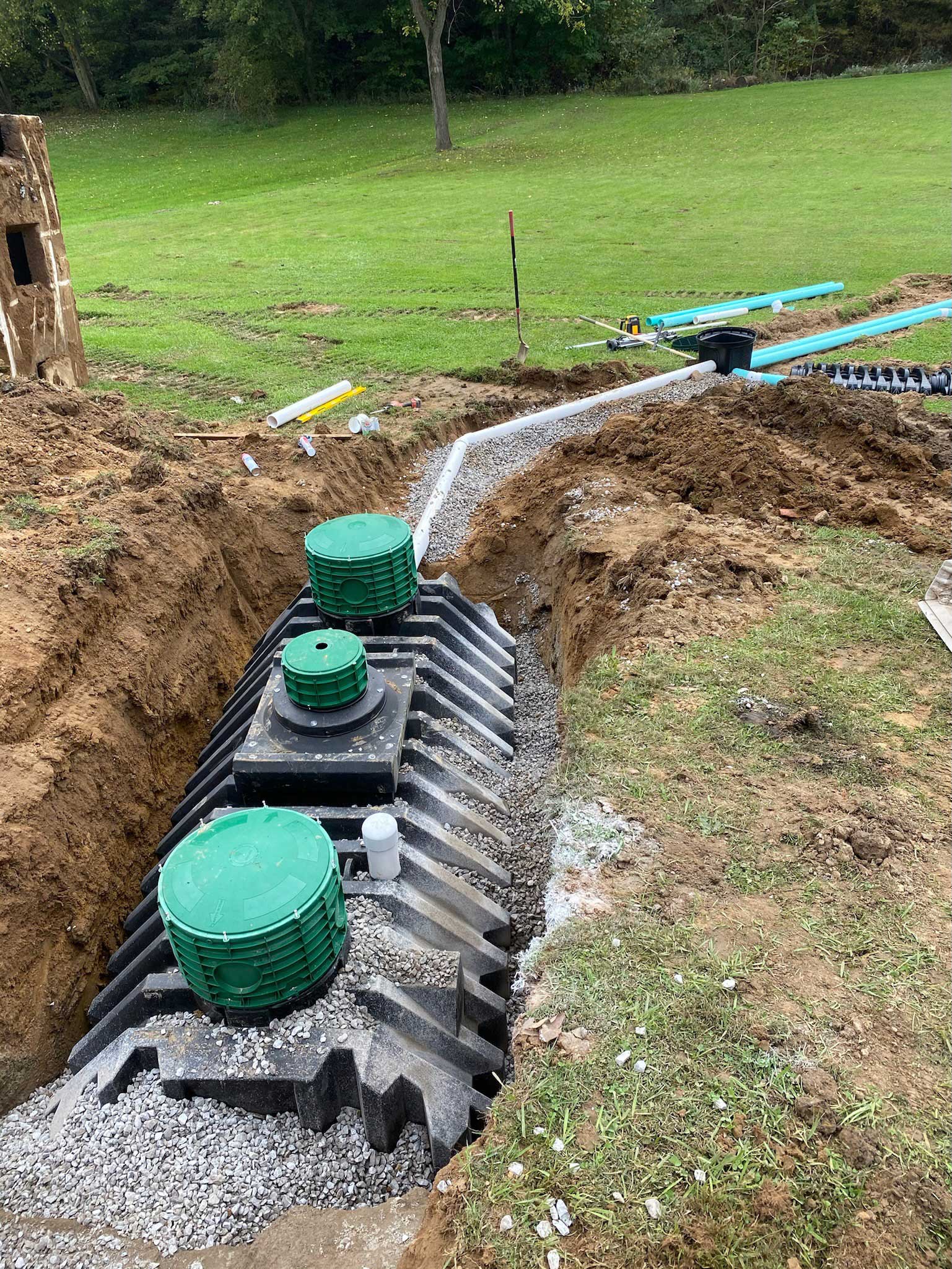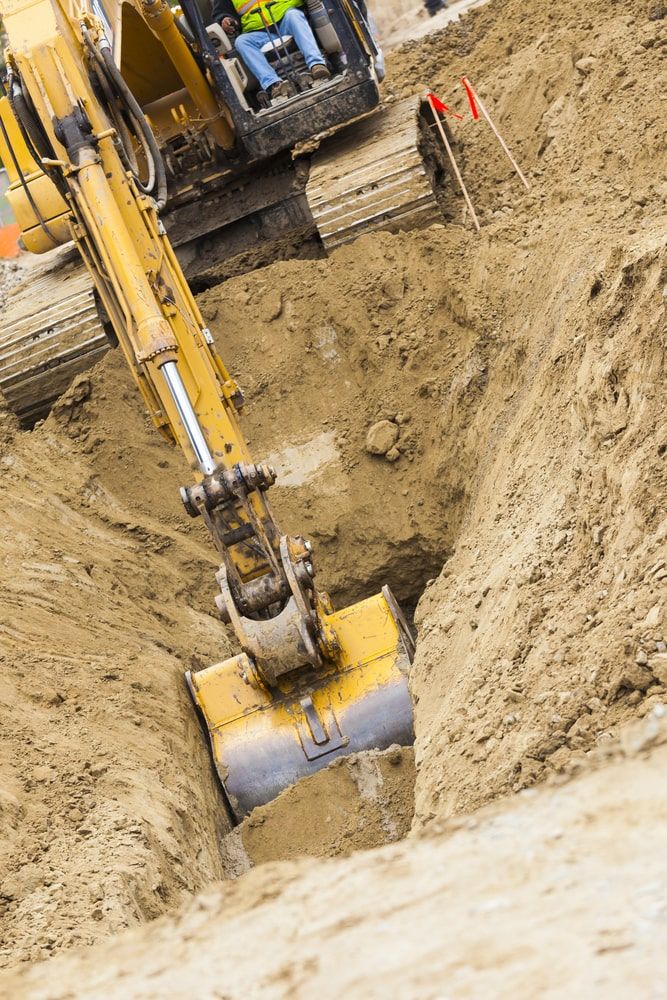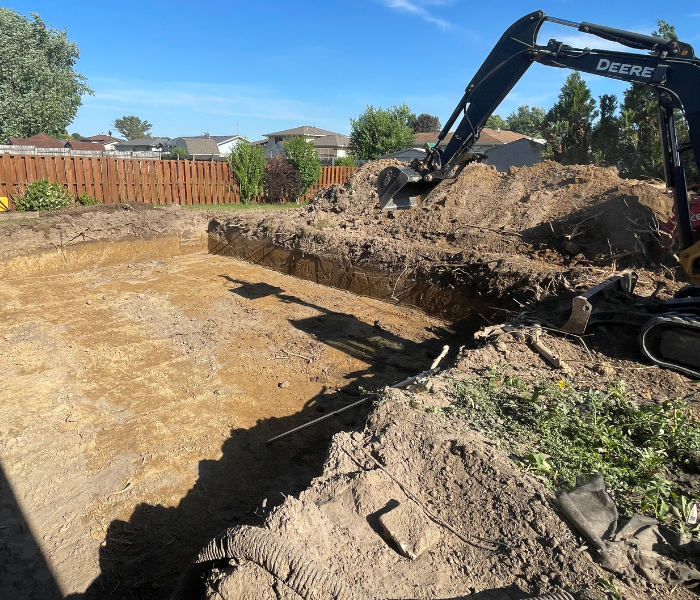Ideal Dump Truck Companies in Ohio - Top-Rated Dump Truck Providers
Ideal Dump Truck Companies in Ohio - Top-Rated Dump Truck Providers
Blog Article
Extensive Exploration: The Scientific Research Behind Superior Excavation Practices
The realm of excavation practices is a domain name where scientific research links with workmanship to uncover the enigmas concealed below the planet's surface area. From ancient hand devices to modern hydraulic excavators, the development of excavation strategies has actually been a testimony to human ingenuity and technological developments. Nevertheless, what really sets superior excavation methods apart is a deep understanding of geological principles, combined with the utilization of sophisticated tools and techniques. By exploring the science behind these techniques, we can discover the tricks that lie below our feet and appreciate the accuracy and competence that enter into every dig.
Advancement of Excavation Strategies
Throughout history, the evolution of excavation techniques has played an important role ahead of time building and construction methods and historical explorations. From the rudimentary devices used by our ancestors to the sophisticated equipment employed in contemporary times, the progression of excavation methods has actually considerably transformed just how we approach various tasks.
In old times, manual work with basic tools such as wheelbarrows, shovels, and pickaxes was the key technique of excavation. This labor-intensive procedure limited the depth and range of excavations, usually resulting in sluggish progression and limited access to certain sites. As human beings progressed, so did the methods and devices made use of for excavation.
The Industrial Revolution noted a turning factor in excavation methods with the intro of steam-powered machinery. In contemporary times, innovation plays a pivotal role in excavation, with innovations like General practitioner systems, drones, and 3D scanning boosting accuracy and performance in the field.
Role of Innovation in Excavation

The integration of innovative technology has actually basically reinvented the area of excavation, improving precision and efficiency to unprecedented levels. Among the key technical advancements that has considerably affected excavation methods is the use of general practitioner systems. These systems permit for precise mapping of excavation websites, allowing drivers to properly locate below ground utilities and structures. In addition, making use of telematics in excavation equipment has actually made it possible for real-time monitoring of device efficiency, bring about aggressive upkeep and boosted functional performance.
Additionally, the arrival of 3D modeling and simulation software program has structured the preparation procedure for excavation projects. Engineers and operators can currently envision the whole excavation process prior to beginning, maximizing and identifying possible difficulties operations. Together with this, the execution of drones in excavation activities has promoted airborne surveys, volumetric dimensions, and website evaluations with unparalleled speed and accuracy.
Geological Principles in Excavation
An understanding of geological principles is necessary for ensuring the structural honesty and stability of excavation websites. Geological elements play a crucial role in establishing the usefulness and safety of excavation projects (excavating ohio). One key geological principle to consider is the Source kind of dirt or rock present at the website. Different dirt types, such as clay, sand, or crushed rock, have differing levels of stability and need various excavation methods. For instance, natural soils like clay might need additional assistance to avoid collapses, while sandy soils might be vulnerable to erosion throughout excavation.
Additionally, the geological framework of the location, consisting of mistakes, fractures, and rock developments, should be meticulously analyzed to determine prospective threats and obstacles. Digging deep into near geological fault or unsteady rock formations can result in instability and potential threats. By performing complete geological surveys and analysis, excavators and designers can develop techniques to mitigate threats and make sure the effective completion of excavation tasks. Inevitably, integrating geological concepts into excavation practices is essential for accomplishing safe, reliable, and lasting results.

Most Current Tools for Excavation
In the world of excavation methods, contemporary developments in tools have changed the effectiveness and precision of excavation procedures. One of the newest devices making waves in the sector is the usage of drones furnished with sophisticated imaging innovation. These drones can provide thorough airborne studies of excavation sites, offering real-time information on topography and prospective risks. This details help in better preparation and decision-making throughout the excavation process.
One more cutting-edge tool getting appeal is the execution of 3D printing modern technology for producing custom excavation equipment. This permits the manufacturing of specialized you can look here devices that are customized to the details needs of a job, increasing performance and minimizing downtime.
Additionally, improvements in products scientific research have brought about the development of stronger and much more long lasting excavation tools. lancaster excavation. Tungsten carbide-tipped excavator accessories, for instance, offer premium performance in tough ground conditions, improving productivity on-site
Science's Influence on Excavation Practices

Furthermore, advancements in materials science have actually caused the production of more powerful, more long lasting excavation tools and devices. The usage of composite products in shovels and miners has actually boosted their efficiency and durability, eventually boosting efficiency on excavation websites. Additionally, clinical research on soil auto mechanics and geotechnical engineering has supplied important understandings right into soil behavior, permitting excavation experts to make educated choices pertaining to excavation approaches and soil stablizing techniques. Overall, science remains to drive development and improvement in excavation practices, making excavation jobs a lot more efficient, economical, and sustainable.

Conclusion
Finally, the evolution of excavation strategies has been substantially affected by innovations in technology and a deeper understanding of geological principles. The current tools and equipment used in excavation have actually boosted effectiveness and precision in the area. The application of scientific expertise has significantly enhanced excavation techniques, resulting in much more efficient and sustainable techniques for digging deep into various kinds of materials.
In the realm of excavation techniques, modern advancements in tools have actually transformed the performance and precision of excavation processes. By leveraging clinical concepts, the excavation market has been able to considerably improve efficiency, accuracy, and safety and security in excavation processes. GPR enables excavation teams to non-invasively scan and map subsurface frameworks, energies, and prospective threats, enabling them to plan excavation jobs with better accuracy and reduced risk of crashes.
In addition, clinical study on dirt technicians and geotechnical design has given useful understandings right into dirt actions, allowing excavation experts to make educated choices pertaining to excavation techniques and soil stablizing strategies. Generally, science continues to drive innovation and Get More Info improvement in excavation techniques, making excavation projects much more effective, economical, and sustainable.
Report this page